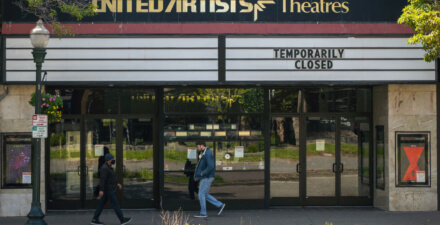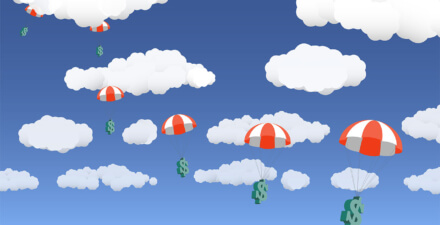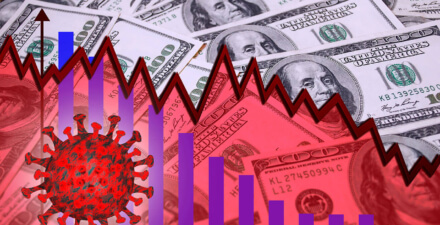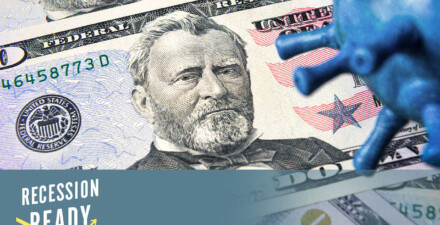New research on the Great Recession shows extended unemployment benefits insignificantly affect U.S. unemployment rates

Unemployment rates in the United States are currently higher than they were at height of the Great Recession, standing at 11.1 percent in June after declining from a record high of 14.7 percent in April, compared 10.6 percent at the height of the previous recession in January 2010. Amid the deepening coronavirus recession, Unemployment Insurance is critical to keeping families afloat and bolstering our economy, just as the program has been throughout economic downturns since its federal inception in the Social Security Act of 1935.
Then and now, however, there is a common public narrative that purports generous and lengthy access to Unemployment Insurance is a disincentive to work, with people choosing to stay home and receive benefits rather than return to work. New cutting-edge research examining unemployment benefits and unemployment rates during and after the Great Recession demonstrates that was not the case then—with key implications today as Congress and the Trump administration negotiate whether and how to extend the Pandemic Unemployment Compensation program beyond the end of this month.
Forthcoming in the American Economic Journal: Economic Policy, the paper is titled “Unemployment Insurance Generosity and Aggregate Unemployment,” by Christopher Boone of Cornell University, Arindrajit Dube of University of Massachusetts Amherst, Lucas Goodman of the U.S. Treasury Department, and Ethan Kaplan of the University of Maryland, College Park. Their new research reveals that emergency Unemployment Insurance and extended benefits during and after the Great Recession did not increase unemployment rates between counties with longer access to those benefits, compared to those with shorter access. The four researchers find that overall bad economic conditions, such as those which occurred more than a decade ago and are evident again today, determine U.S. labor market outcomes more than generous access to unemployment benefits.
Prior to the steep downturn this year, the Great Recession was one of the biggest economic crises in a lifetime. Policymakers responded by instituting large increases in the duration of Unemployment Insurance, from 26 weeks to 99 weeks, but there were variations across states in both magnitude and timing. These changes were executed through the Emergency Unemployment Compensation program enacted by Congress on June 30, 2008 and modified seven times subsequently, as well as through the already-existing Extended Benefits program that provided 13 weeks or 20 additional weeks of Unemployment Insurance triggered by the level or pace of increase of a state’s unemployment rate.
Those triggers for Extended Benefits, however, are optional for states to take up, so many states opted out of providing more generous benefits in the Great Recession, resulting in variation between states in the duration of benefits available to unemployed workers. Both changes in policy over time through the Emergency Unemployment Compensation program and changes between states through the Extended Benefits program allow for what economists call a natural experiment to examine the impact of greater generosity in unemployment benefits on aggregate employment.
Boone, Dube, Goodman, and Kaplan implement what’s known as a cross-border-pair methodology—which examines differences in policy outcomes in similar regions of the economy and was pioneered by economists David Card and Alan Krueger—alongside an event study design, both with the Quarterly Census of Employment Dynamics, to test whether the long duration of unemployment benefits increased aggregate unemployment in states with more generous Unemployment Insurance. The four researchers find that the longer duration of benefits and the greater the increases to benefits result in a very small, positive impact on employment rates within those counties, with their results not statistically different than zero. While the overall employment-to-population ratio declined by 3 percentage points during the Great Recession, counties with more generous benefits may have offset this somewhat, or at least did not have worse employment outcomes.
Their paper directly challenges previous research that finds negative impacts on county employment rates as a result of longer Unemployment Insurance benefits, particularly work by Marcus Hagedorn of the University of Oslo, Iourii Manovskii of the University of Pennsylvania, and Kurt Mitman of Stockholm University. They followed a similar methodology. Boone, Dube, Goodman, and Kaplan rectify these discrepancies by noting that their paper makes use of superior administrative data in the Quarterly Census of Employment and Wages. The four researchers also critique the methodology of the previous research for using a “quasi-forward differencing” as a dependent variable based on anticipation of policy changes rather than the actual policy changes, and for examining a shorter time horizon.
Boone, Dube, Goodman, and Kaplan also address other critiques of the cross-border-pair methodology by dropping counties where employment was correlated with state levels of employment and by including county fixed effects. Their results did not change when dropping potentially spurious counties. Boone, Dube, Goodman, and Kaplan also note that their findings align with additional research using alternative methodologies that find similar insignificant impacts of duration generosity.
This cutting-edge research from the previous economic downturn demonstrates that benefit generosity in an economic crisis does not negatively impact employment levels, prolonging the labor market downturn. As the policy debate over extending more generous unemployment benefits will surely continue throughout the current recession, this new research supports the proposals included in Equitable Growth and the Hamilton Project’s Recession Ready essay compilation that calls for increased generosity in Unemployment Insurance, as well as triggers that extend the duration of benefits based on state-level unemployment rates.
As we demonstrate in our new factsheet, “Unemployment Insurance and why the effect of work disincentives is greatly overstated amid the coronavirus recession,” the research shows that Unemployment Insurance not only does not appear to have a significant impact on increasing unemployment rates, but also that there are other positive effects such as increasing aggregate demand to help support our economy in a crisis.







